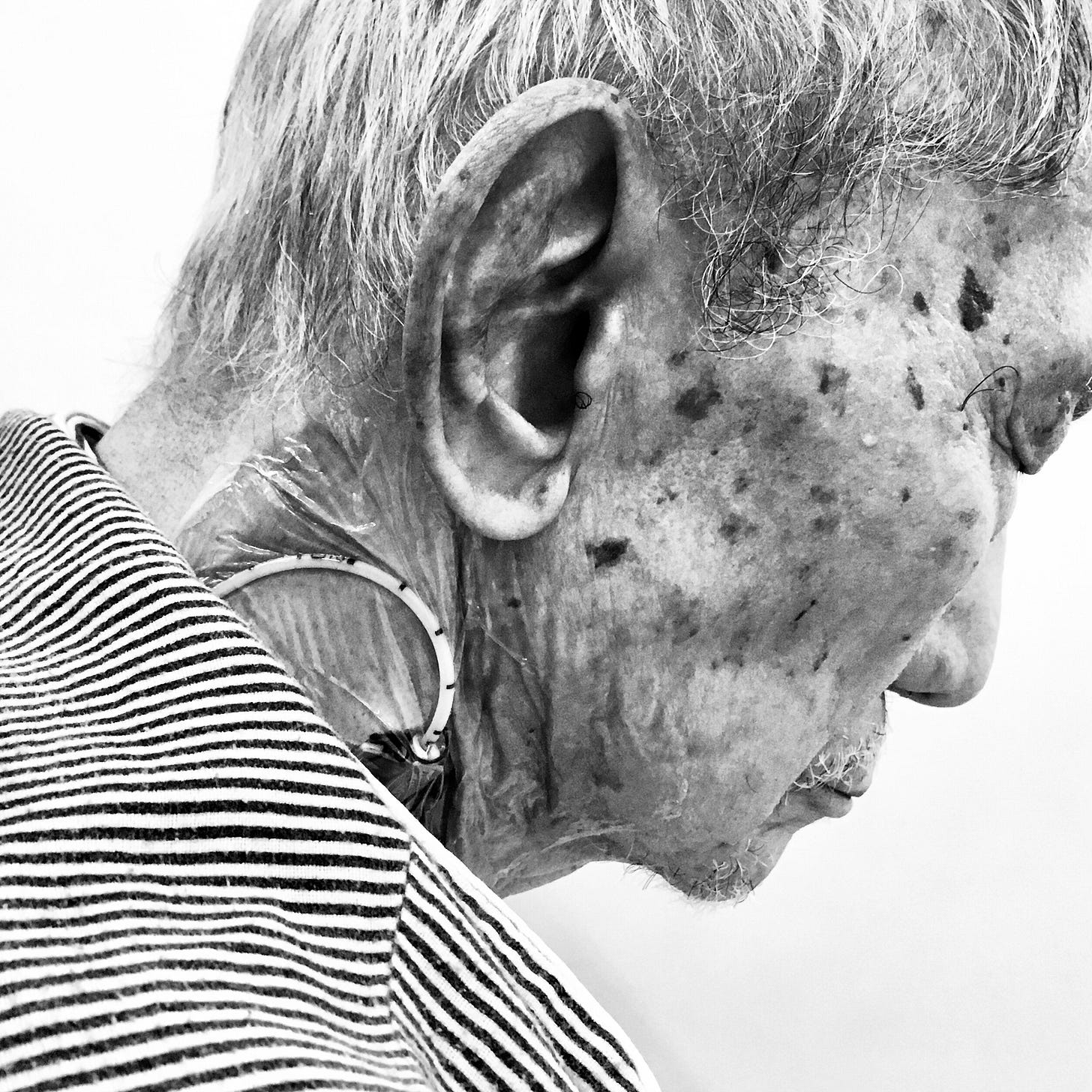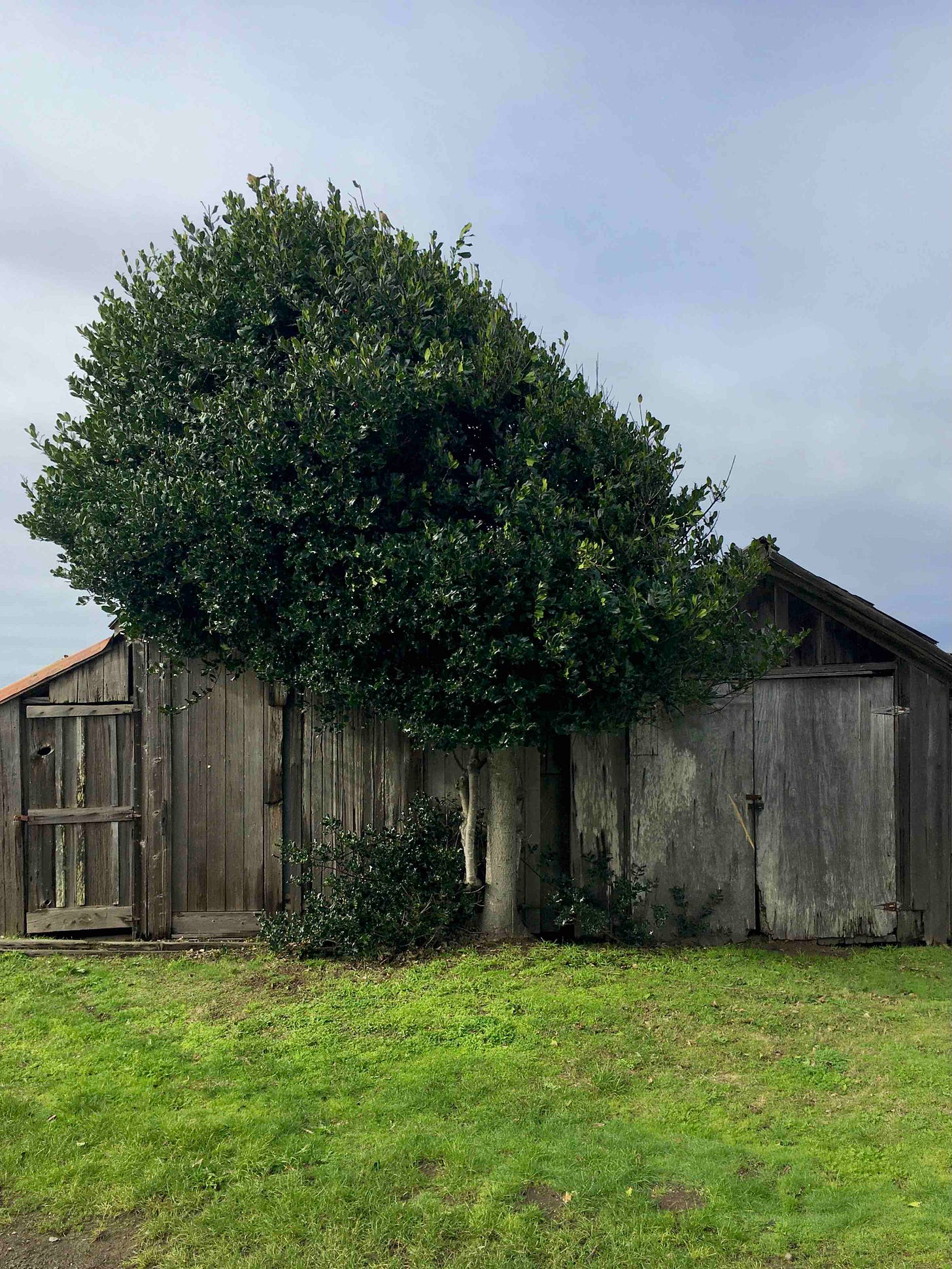Wabi sabi is not found in nature in moments of bloom and lushness, but at moments of inception and subsiding. Wabi sabi is not about gorgeous flowers, majestic trees, or bold landscapes. Wabi sabi is about the minor and the hidden, the tentative and the ephemeral: things that are so subtle and evanescent they are invisible to the vulgar eye.
—Leonard Koren
Wabi Sabi for Artists, Designers, Poets and Philosophers
I’ve been looking at photographs of modern architecture for a good 7 months working as a Curator/Photo Editor at a tech company. It’s been a fascinating journey of learning and discovery in this field. Although I have acquired an appreciation for modernist aesthetics, my propensity is towards the opposite: wabi-sabi.
Wabi-sabi originated in Japan but if you ask the locals to define what it means, words escape them. They could go so far as to describe the feeling of it. According to Leonard Koren, author of the book Wabi-Sabi for Artists Designers, Poets and Philosophers, this was intentional.
Some Japanese critics feel that wabi-sabi needs to maintain its mysterious and elusive—hard to define—qualities because ineffability is part of its specialness. Wabi sabi is, they believe, a teleological benchmark—an end in itself—that can never be fully realized. From this vantage point, missing or indefinable knowledge is simply another aspect of wabi-sabi’s inherent “incompleteness.”
The idea to write the book came to him after attending a tea event in Japan that promised a wabi-sabi experience. He was disheartened to see that the core beliefs and aesthetics were replaced with sleek and grandeur. Everything was so polished that he felt its true meaning had diminished.
Mr. Koren doesn’t claim to have a definitive meaning to wabi-sabi by any means. Instead, he intends to contribute to its preservation by offering a guidepost for future generations.
I picked up his book many years ago during one of my regular trips to the SFMoMA store when I used to work at a hotel nearby. I was curious to know why I was drawn to photograph certain things like broken watches, empty plates, crumpled paper on a desk, weathered objects, interior spaces, and landscapes. Anything imperfect had a powerful allure to me. The book made sense of this inclination. Mr. Koren writes:
Wabi-sabi is a beauty of things imperfect, impermanent and incomplete.
It is a beauty of things modest and humble.
It is a beauty of things unconventional.
When I was searching for a few images to show as an example for this post, I stumbled upon this arresting portrait of my father in his hospital room back in 2019. He had originally refused surgery and my siblings and I thought he was not going to make it. He changed his mind at the last minute just as we were flying out from our destinations abroad. The surgery was successful and he was recuperating by the time we arrived. We took turns keeping him company. To occupy the time, I documented in writing and pictures (I used the Momento app) the comings and goings of nurses and doctors, my father’s meals, and anything that happened that day.
One afternoon, I captured his portrait while he fell asleep on the chair next to the hospital bed. I wrote an accompanying text to this picture.
June 18, 2019, 12:50 p.m.
Dad just had lunch. It doesn’t look like he ate much of the chicken. He left a good portion off to the side of his plate. He finished the soup and ate half of the rice. He drank 120 ml of water. I’m wondering if he’s afraid to eat the chicken pieces for fear it may get stuck in his stomach. I’ve noticed it in the last two days. He is certainly being cautious.
A nurse came in to clean the area around the catheter in his neck. Afterward, she told me that Surgery gave their approval to remove it. They are waiting for consent from the other doctors. It remains attached until all of them sign off.
My relationship with my father is complicated and I have mixed emotions about him. We are civil but conversations have always been elusive. My parents also belong to a generation where non-verbal communication is normal and there is a distinct delineation between parent and child.
That afternoon though, for a split second I saw something different— something beautiful, something wabi-sabi. Staring at this picture again 4 years later, it dawned on me that a moment of suspended judgment and deep compassion is possible—a timely reminder when I see him again in a few weeks.
Although wabi-sabi is often associated with poetry, nature, landscapes, and still lifes, it could also apply to portraits or any creative endeavor.
in his recent post, High Lonesome Haiku , shares his take on wabi-sabi as it relates to his art practice.Things wabi-sabi are expressions of time frozen. They are made of materials that are visibly vulnerable to the effects of weathering and human treatment. They record the sun, wind, rain, heat and cold in a language of discoloration, rust, tarnish, stain, warping, shrinking, shriveling, and cracking. Their nicks, chips, bruises, scars, dents, peeling and other forms of attrition are a testament to histories of use and misuse. Though things wabi-sabi may be on the point of dematerialization or (material-ization)—extremely faint, fragile or desiccated—they still possess an undiminished poise and strength of character.
Wabi-sabi deepened my curiosity and creative practice. Reading the book and absorbing its principles brought more intentionality to the way I see and inform what I capture with my camera. The same is true with collaging. On a personal level, wabi-sabi was my entry point to accepting things as they are and aligning myself with the flow of life.
Consider this an invitation, dear ones, to uncover the beauty in life's ephemeral, quiet, and imperfect moments, and watch as something precious unfolds.
As always, let’s meet in the comment section below if anything resonates with you.
See you all next Sunday!
You might also be interested in these related posts from my archive:
Tranquility and Rhythm
Greetings! It's Sunday morning here in West Ireland. Specifically, Doolin in County Clare. The cottage where we are staying sits a few miles off the coast. Large windows surround the entire house. Rain and wind batter the emerald landscape. I notice
The Home We Live In
Watch now (1 min) | We obtained our loft-style condo in a housing lottery 19 years ago. It was a long shot. Only 15 units were available yet 50 people showed up. Malyn, my youngest sister, happened to be visiting that weekend. If anyone had luck in real estate, she had it. So, we asked her to pick a ticket from the glass bowl that was being passed around by the housing dev…
The Beauty of Limitations
Watch now (2 mins) | It's been raining all week in the Bay Area. In our neck of the woods, it's called an atmospheric river. I love it when it rains and I am a self-professed pluviophile. The caveat though is that commuting in the rain annoyed me. In 2016, the rain returned after a long period of drought in the Bay Area. So, I thought to myself, why not do a creative project…










When I see the portrait of your father, it evokes a feeling of reverence in me. I feel a respect for what he's endured. His quiet resilience humbles me. Over the years, I've seen it many times in my patients and in elderly friends I have known. I wonder if this feeling is akin to the impulse that urged you to preserve the fragile moment as something uniquely human and holy. Wabi-sabi (to me) is a gentle, sane response to a harsh world. Ultimately it asks: Can death be beautiful? We already know the answer.
I'm late to this post, @Stella, and I so appreciate it! I'm drawn to the wabi-sabi - it truly is a different way of seeing. Thank you for sharing.